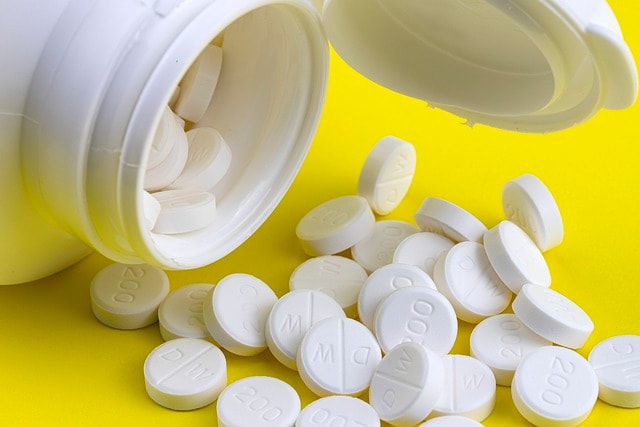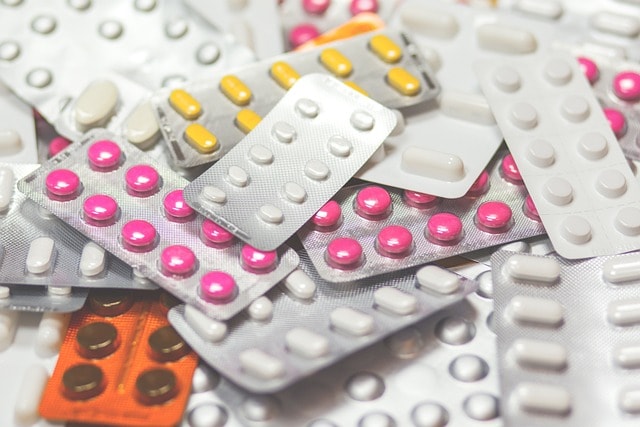
Anavar, also known as Oxandrolone, is a popular anabolic steroid used by athletes and bodybuilders to enhance performance and muscle growth. It is favored for its ability to promote lean muscle mass without significant water retention. However, it is important to be aware of the adverse effects associated with Anavar use, which can include weight gain, fluid retention, abnormal liver function, and cardiovascular issues.
Introduction
Anavar, known scientifically as Oxandrolone, is a popular anabolic steroid that has gained significant attention in the world of bodybuilding and athletics. Initially developed in the 1960s to help patients regain weight after surgery or chronic illness, Anavar has since been adopted by athletes and bodybuilders for its muscle-building and fat-reducing properties. However, its use comes with a fair share of controversy and potential health risks.
What is Anavar?
Anavar is a synthetic anabolic steroid derived from dihydrotestosterone (DHT). It is known for its mild androgenic properties, making it a favored choice for both men and women. Anavar interacts with androgen receptors in target tissues to bring about androgenic effects, such as muscle mass development and strength. Unlike many other anabolic steroids, Anavar does not aromatize, meaning it does not convert to estrogen in the body. This characteristic reduces the risk of estrogen-related side effects such as gynecomastia (breast tissue growth in men).

Medical Uses
Originally, Anavar was prescribed for medical conditions requiring muscle preservation and weight gain. Some of its medical applications include:
- Promoting Weight Gain: For patients recovering from surgery, severe trauma, or chronic infections.
- Counteracting Catabolism: In cases of chronic conditions like HIV/AIDS, where muscle wasting is a concern.
- Bone Density Improvement: Helping treat osteoporosis by increasing bone density.
- Growth Hormone Treatment: Used in conjunction with growth hormone treatment when it alone is not effective.
Patients with chronic obstructive pulmonary disease (COPD) should inform their doctor before using Anavar.
Use of Anabolic Steroids in Bodybuilding and Athletics
Anavar is prized in the fitness community for its ability to enhance strength and muscle mass without significant weight gain. This makes it particularly popular during cutting cycles, where the goal is to preserve muscle while reducing body fat. The key benefits of Anavar for athletes include:
- Increased Muscle Mass: Promotes lean muscle growth by enhancing protein synthesis and activating muscle cells to promote muscle growth.
- Fat Reduction: Aids in the reduction of visceral and subcutaneous fat.
- Enhanced Strength: Improves overall strength and performance.
- Minimal Water Retention: Leads to a more defined and vascular appearance.
Dosage and Cycle
The dosage of Anavar can vary depending on the user’s experience and goals. Typically, men might take 20-100 mg per day, while women usually take 5-20 mg per day. Anavar cycles generally last between 6 to 8 weeks. It is often stacked with other steroids like Winstrol or Trenbolone for enhanced results. Anavar tablets can interact with other drugs, so it is important to consult a healthcare provider before starting the medication.
If a dose is missed, take the missed dose as soon as it is remembered. If it is almost time for the next scheduled dose, skip the missed dose and do not take extra medicine to make up for it.
Potential Side Effects and Liver Problems
Despite its mild reputation, Anavar can still cause side effects, especially when misused or abused. Some potential side effects include:
- Liver Toxicity: Although less hepatotoxic than other oral steroids, long-term use can still cause liver problems.
- Cardiovascular Issues: Can negatively impact cholesterol levels, increasing the risk of cardiovascular diseases.
- Hormonal Imbalance: May suppress natural testosterone production, leading to hormonal imbalances.
- Vir masculinization in Women: Although rare, high doses can cause masculinizing effects in women, such as deepened voice, increased body hair, and enlarged clitoris.
If you experience any serious side effects, tell your doctor right away.
Legal Status
Anavar is classified as a Schedule III controlled substance in the United States, making it illegal to use without a prescription. The legal status varies globally, with some countries allowing its use for medical purposes, while others have stricter regulations.
The History of Anavar
Development and Early Use
Anavar was first developed in 1962 by Raphael Pappo and Christopher J. Jung for the pharmaceutical company Searle Laboratories (now part of Pfizer). It was initially marketed under the brand name Anavar and was designed to provide the anabolic effects of testosterone with reduced androgenic effects. This made it an attractive option for medical use, particularly for patients needing to regain weight and muscle mass after debilitating illnesses or surgeries.
Medical Applications
In the 1960s and 1970s, Anavar was prescribed for various medical conditions. Its ability to promote muscle growth and improve bone density made it useful for treating patients suffering from severe weight loss due to surgery, trauma, chronic infections, or other conditions that caused muscle wasting and bone pain. Additionally, it was used to treat osteoporosis in women by increasing bone density and reducing the risk of fractures. Anavar is also used to relieve bone pain due to bone loss in osteoporosis patients.
Rise in Popularity Among Athletes
By the 1980s, Anavar’s muscle-building properties began to attract the attention of the athletic and bodybuilding communities. Athletes appreciated Anavar for its ability to increase muscle mass and strength without significant water retention or fat gain. Its mild nature and reduced risk of side effects compared to other anabolic steroids made it a preferred choice for both male and female athletes.
Regulatory Changes, Market Withdrawal, and Withdrawal Symptoms
In the late 1980s, increasing scrutiny and regulation of anabolic steroids led to changes in the availability of Anavar. In 1989, Searle decided to discontinue the production of Anavar due to growing concerns about the abuse of anabolic steroids in sports and the resulting legal and regulatory challenges. This withdrawal from the market created a void that was soon filled by underground laboratories producing generic versions of the steroid.
Reintroduction, Modern Use, and Protein Synthesis
In 1995, Bio-Technology General Corporation (BTG), now Savient Pharmaceuticals, reintroduced Oxandrolone under the brand name Oxandrin. This reintroduction was primarily for medical use, targeting conditions like HIV/AIDS-related muscle wasting and severe burns. Women using Anavar should be aware of the potential risks of developing male characteristics, which could be irreversible if testosterone treatment is continued. Despite its reintroduction for legitimate medical purposes, Oxandrolone continued to be used off-label by bodybuilders and athletes. It is advised against the use of Anavar during pregnancy due to the risk of harm to the unborn baby.
Current Status
Today, Anavar remains a controlled substance in many countries, including the United States, where it is classified as a Schedule III drug. Its use is limited to prescription-only for specific medical conditions, but it continues to be popular in the fitness and bodybuilding communities for its muscle-building and fat-reducing properties. Anavar can interact with other drugs, including prescription and over-the-counter medicines, vitamins, and supplements, which may lead to serious side effects. Despite its benefits, the potential for misuse and the associated health risks make it a controversial substance. Long-term use of Anavar can lead to withdrawal symptoms such as mood swings, fatigue, restlessness, loss of appetite, insomnia, and decreased sex drive.
Conclusion
Anavar’s journey from a medically beneficial anabolic steroid to a popular performance-enhancing drug in sports highlights the complex relationship between medical science and athletic performance. Its history underscores the importance of balancing therapeutic benefits with potential risks and the need for regulatory oversight to prevent abuse.
Conclusion
Anavar remains a popular anabolic steroid due to its effectiveness in promoting lean muscle mass and fat reduction with fewer androgenic effects compared to other steroids. However, its use carries significant legal and health risks. As with any performance-enhancing drug, potential users must weigh the benefits against the risks and consider legal implications. For those considering Anavar, it is crucial to consult with a healthcare professional to ensure safe and informed usage.